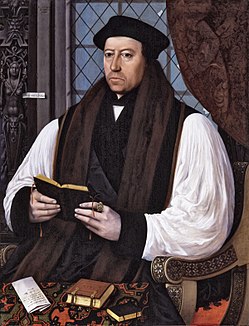Valduvian Reaction
The Valduvian Reaction, alternatively referred to as the Valduvian Correction, Valduvian Reformation, or Valduvian Schism, was a Sotirian religious and political movement in the Platavian Union and parts of the Rudolphine Confederation during the 16th century. Usually characterized as part of the broader Amendist Reaction, the movement saw the spread of Kausian theology throughout modern-day Valduvia and culminated in the ongoing break in communion between the Church of Valduvia and the Solarian Catholic Church. The movement's description as Amendist is controversial among scholars, and a sizable minority argue that the theological basis for the events in question is more closely related to Episemialist theology than that of other contemporary Amendist movements. For this reason, the Valduvian Reaction is sometimes considered to be a distinct event drawing inspiration from the zeal of Amendist reformers, rather than a constituent movement of the latter.
The Valduvian Reaction began in 1515 when Arvīds Kauss, the Archbishop of Matīspils, delivered his Letter of Grave Concern to Pope TBA. In his letter, Kauss expressed consternation over the excommunication and killing of leading reformer Johanne Stearn that had occurred several months prior, and outlined several teachings and practices of the Catholic Church that Kauss argued were recent inventions inconsistent with historical Sotirianity. Kauss's points included critiques of papal supremacy, clerical celibacy, the distinction between mortal and venial sins, indulgences, the concept of purgatory, closed communion, filioque, the relationship and relative authority of scripture and sacred tradition, and Catholicism's claim to be the one true church. Kauss gained a significant following among the Platavian clergy and was openly supported by King Matīss IX, who promoted the spread of Kausian theology in neighboring Burland with the aim of undermining Rudolphine authority in the region. The Solarian Catholic Church ultimately repudiated Kauss's views at the Council of X in 15XX, and Kauss and his followers were excommunicated. The prelates of the Platavian and Burish churches subsequently established the Church of Valduvia in 15XX, marking the end of the Reaction.
The effects of the Reaction were widespread, with religious, societal, and political ramifications that permanently shaped the course of Valduvian history and that of Euclea as a whole. The movement resulted in Kausianism, specifically in its institutionalized form under the Church of Valduvia, emerging as the dominant Sotirian tradition in the territories of modern-day Valduvia. Kausian concepts such as scriptura per traditionem and branch theory formed the basis for a new theological paradigm in Eastern Sotirianity, distinct from both Catholicism and most other strains of Amendism. The status of Kausian Sotirians in Burland was a significant cause of the Amendist Wars during the late 16th and early 17th centuries, with the Platavian Union intervening to protect the rights of Amendists in the Rudolphine Confederation. Platavia and the Burish states subsequently formed the Valduvian Confederation, the earliest predecessor of the modern Valduvian state, as a defensive bulwark against future aggression by the Rudolphines. The shared religious identity between Burlanders and ethnic Valduvians would later become central to the emergence of a Valduvian national identity in the late 18th and early 19th centuries.
